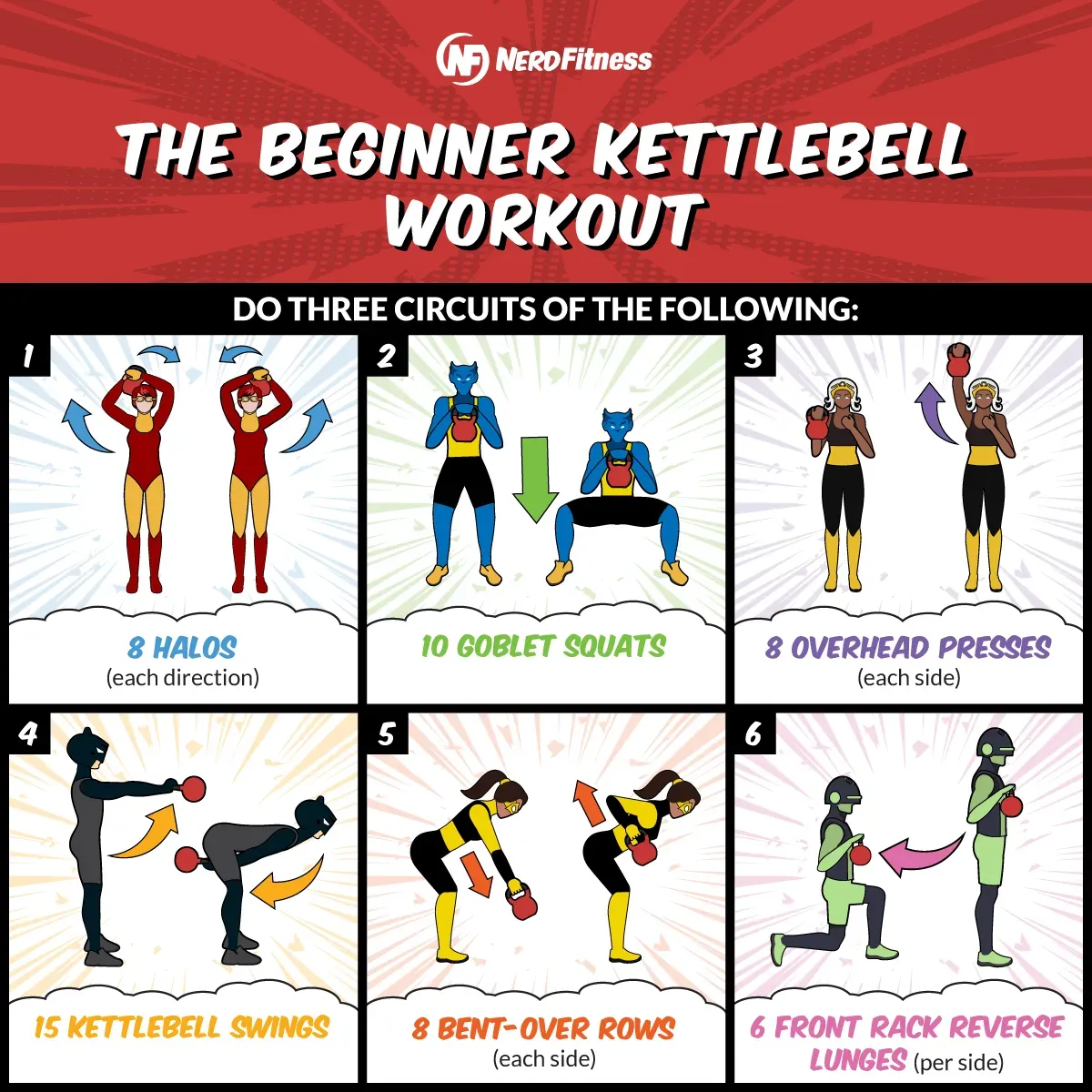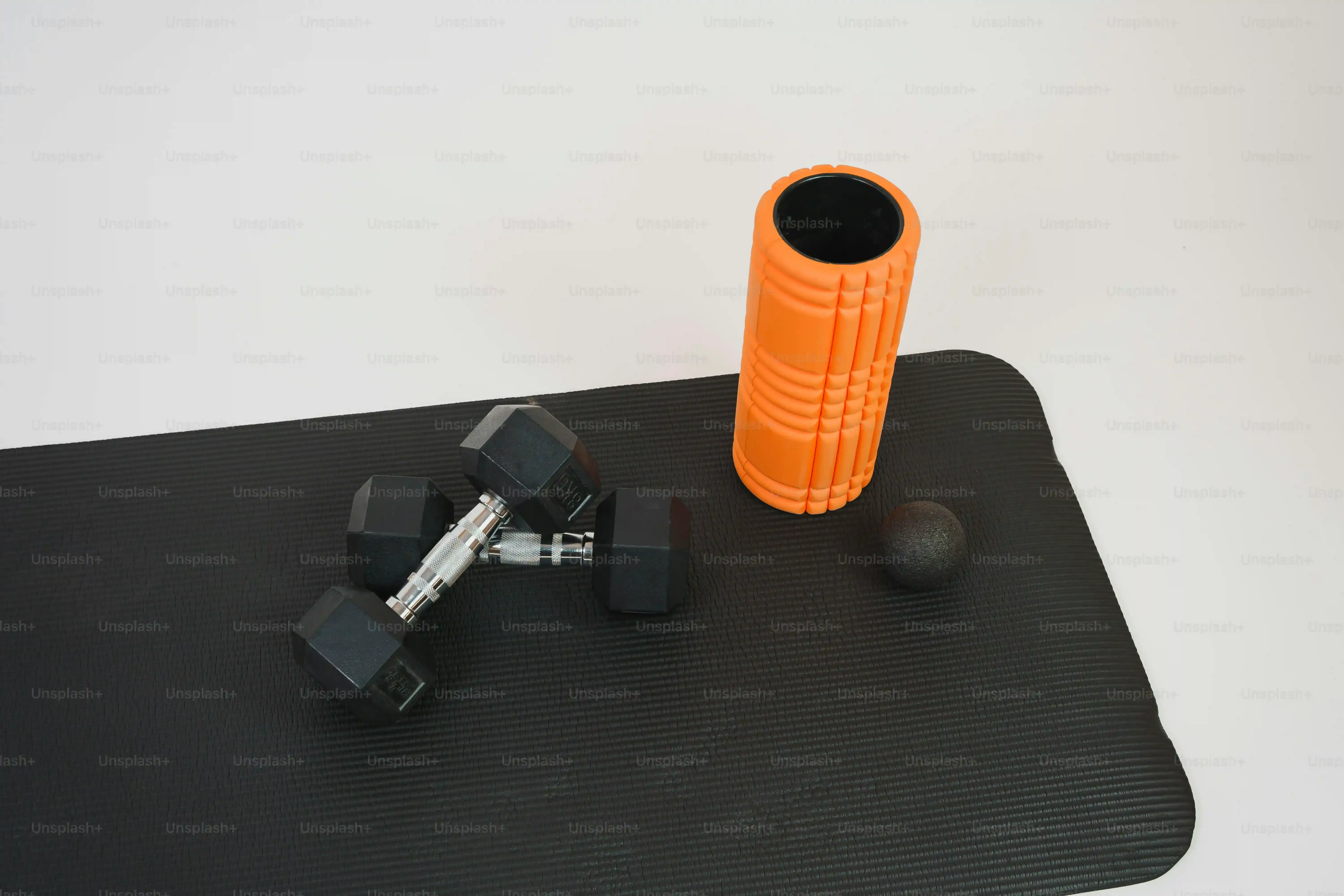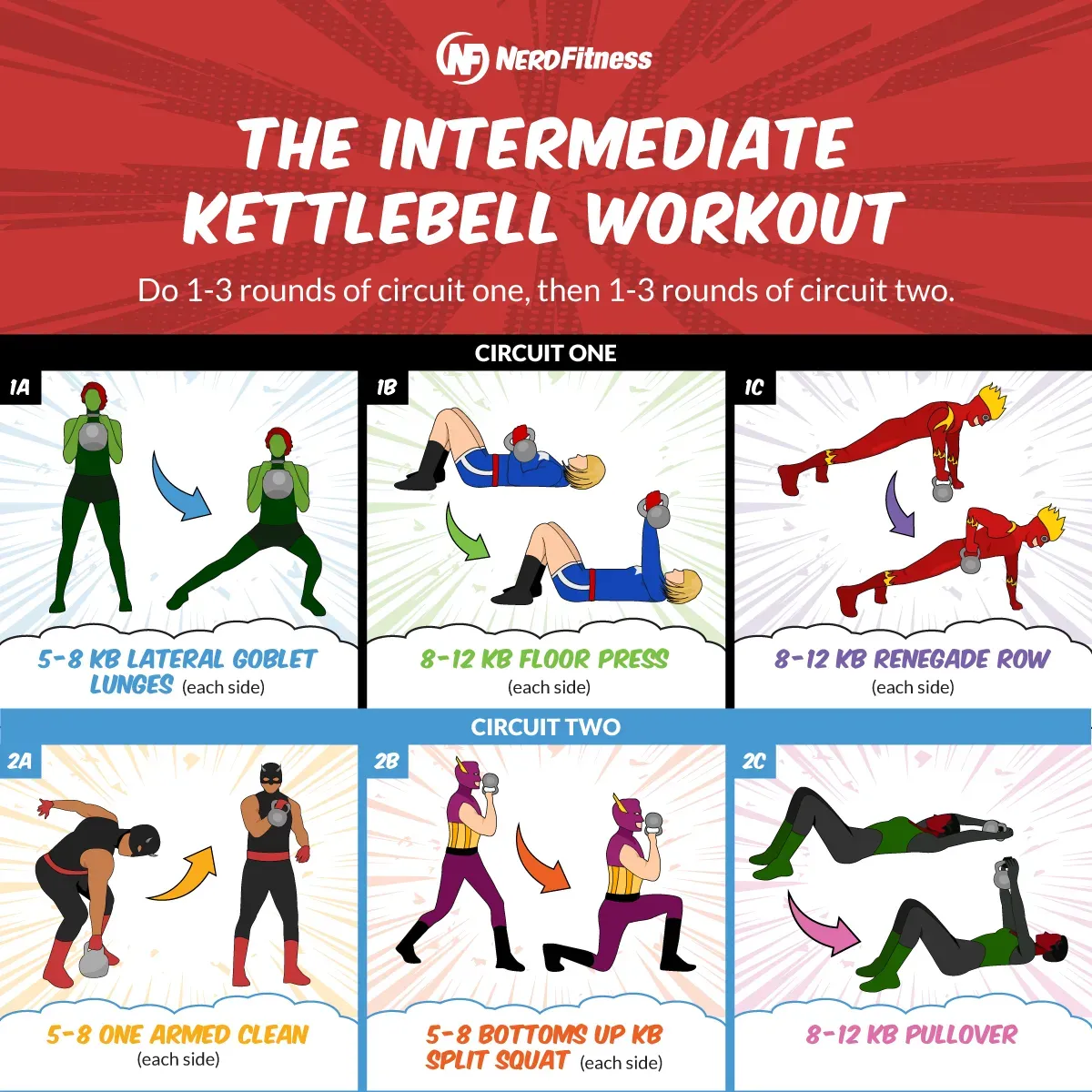Table of Contents
Getting started with fitness, especially strength training, can feel daunting. Gyms are crowded, equipment is confusing, and building a home setup seems expensive and space-consuming. But what if you could build strength, improve endurance, and even shed some pounds with just one piece of gear? It sounds too simple, but the versatile kettlebell makes it possible. You don't need a rack of dumbbells or complex machines to see real results. A single kettlebell is all it takes to unlock a powerful, full-body workout. This article cuts straight to the chase on how to approach a beginner single kettlebell workout. We’re not going to overwhelm you with jargon. Instead, we’ll focus on the foundational exercises that deliver the biggest bang for your buck, guide you on structuring a simple routine you can stick to, help you choose the right kettlebell to start with, and answer those common questions beginners always have. Let's ditch the complexity and get strong with just one bell.
Getting Started: Your First Beginner Single Kettlebell Workout

Getting Started: Your First Beginner Single Kettlebell Workout
Picking Up the Weird Ball with a Handle
Alright, you've got the bell. Maybe it's sitting there in your living room, looking like a cannonball with a handle. It's not like the dumbbells you've seen. It feels… different. That's the point. Its off-center weight is what makes it such a potent tool. Your very first beginner single kettlebell workout isn't about lifting heavy or doing fancy tricks. It's about getting acquainted. Think of it like meeting a new, slightly awkward friend who promises incredible gains. You need to feel how it hangs, how the weight shifts, how to grip it without crushing your fingers. Don't overthink this first session. The goal is movement, not martyrdom.
Forget Ego, Focus on Feel
Nobody cares how much weight you swing on your first day. Seriously, nobody. The biggest mistake beginners make with a single kettlebell workout is grabbing something too heavy and trying to muscle through movements they don't understand. You're not trying to impress anyone, least of all the kettlebell. Start light. Lighter than you think you need. This initial phase is purely about learning the fundamental patterns – the swing, the squat, the press, the row. These aren't just exercises; they're foundational human movements amplified by the unique load of the bell. Get the feel right now, and the weight will come later. Trust me, trying to learn a proper swing with a bell that's too heavy feels less like exercise and more like trying to herd cats while wearing roller skates.
- Check your space: Make sure you have plenty of room to swing without hitting anything (or anyone).
- Wear appropriate shoes: Flat soles are better than squishy running shoes for stability.
- Warm up: A few minutes of dynamic stretches will make a big difference.
- Watch a quick form video: Seriously, five minutes can save you a lot of grief.
- Start lighter than you think you need: You can always go heavier next time.
- Listen to your body: If something hurts in a bad way, stop.
The Core Moves: Essential Exercises for Your Beginner Single Kettlebell Workout

The Core Moves: Essential Exercises for Your Beginner Single Kettlebell Workout
The Swing: It's All About the Hips, Baby
Forget what you think you know about kettlebell swings if you've only seen people flailing on Instagram. This isn't a shoulder exercise. It's a powerful, ballistic hinge movement driven entirely by your hips. Imagine you're trying to snap a towel with your glutes and hamstrings – that's the kind of force we're talking about. The kettlebell is just the tool that gives you feedback. You hike the bell back between your legs, keeping your back flat, and then explosively stand up, driving the hips forward. The bell floats to chest height because of that hip power, not because you lifted it with your arms. Learning this fundamental hinge pattern is crucial for your beginner single kettlebell workout. Get the hinge right, and everything else gets easier.
The Goblet Squat: Your Groundwork Guru
Hold the kettlebell by the horns (the sides of the handle) right against your chest. This is the goblet position. Why the goblet squat? Because holding the weight in front acts as a counterbalance, helping you stay upright and encouraging you to sink deeper into a proper squat. Think about sitting down onto a low chair, keeping your chest tall and your elbows inside your knees at the bottom. This isn't about bouncing; it's about controlled descent and powerful ascent. It’s arguably the best way for beginners to learn a solid squat pattern, building leg strength and hip mobility simultaneously. It feels stable, controlled, and lets you focus purely on the movement itself.
Exercise | Key Focus | Common Mistake |
|---|---|---|
Kettlebell Swing | Hip Hinge & Explosion | Squatting or lifting with arms |
Goblet Squat | Chest Up, Deep Hips | Leaning too far forward |
The Single-Arm Row: Pull Your Weight
Now let's hit the back. The single-arm kettlebell row is your ticket to building a stronger upper back and lats, which are essential for good posture and preventing that hunched-over look. You can support yourself on a bench or use a sturdy object, or simply hinge at the hips with a slight bend in your knees, letting the bell hang. Pull the kettlebell up towards your hip pocket, squeezing your shoulder blade at the top. Control the weight on the way down. This isn't just about lifting; it's about actively engaging the muscles in your back. Working one side at a time also challenges your core stability, making it a surprisingly effective full-body move within your beginner single kettlebell workout.
Building Your Routine: Crafting a Beginner Single Kettlebell Workout Plan

Building Your Routine: Crafting a Beginner Single Kettlebell Workout Plan
How Often Should You Swing That Thing?
you've got the basic moves down. You can swing without looking like a confused octopus, and your goblet squat feels halfway decent. Now you need a plan. How often should you actually *do* your beginner single kettlebell workout? Don't overcomplicate this. For most beginners, hitting it 2-3 times a week is plenty. Your body needs time to recover and adapt. Trying to do too much too soon is the fastest way to get injured or just burn out completely. Think of it as building a habit, not training for the Kettlebell Olympics (yet). Consistency beats intensity every single time when you're starting out. Pick days that work for you and stick to them. Maybe Tuesday and Friday, or Monday, Wednesday, and Saturday. Whatever fits your life without feeling like a second job.
Putting the Pieces Together: Your First Simple Circuit
Now, how do you arrange those core moves into an actual workout? A simple circuit is your best friend here. You'll do one set of each exercise back-to-back with minimal rest between exercises, then rest for a minute or two after completing the circuit, and repeat. This keeps the intensity up and gets you done faster. For your beginner single kettlebell workout, stick to the foundational movements we covered: swings, goblet squats, and single-arm rows. Maybe add a halo or an overhead press if your shoulder mobility allows and you're using a very light bell. Do 3-4 rounds of this circuit. The goal isn't exhaustion; it's practicing the movements under a bit of fatigue. Don't worry about counting reps like a maniac; aim for quality over quantity. Maybe 8-12 reps for most exercises, or 15-20 for swings.
Exercise | Suggested Reps (Beginner) |
|---|---|
Kettlebell Swing | 15-20 |
Goblet Squat | 8-12 |
Single-Arm Row (each side) | 8-12 |
Halo (each direction) | 5-10 |
Picking Your Partner: Choosing the Right Kettlebell for Beginners

Picking Your Partner: Choosing the Right Kettlebell for Beginners
Don't Be a Hero: Why Size Matters (At First)
you're ready to buy. You walk into a store or browse online, and suddenly there's a whole range of cannonballs staring back at you. Which one do you pick for your beginner single kettlebell workout? This is where many people stumble. They see someone on YouTube swinging a monster bell and think, "Yeah, I'll start there." Bad idea. Seriously, a truly terrible idea. Starting with a kettlebell that's too heavy is the express train to bad form and potential injury. It’s like trying to learn to drive in a Formula 1 car. You need to learn the mechanics first. A lighter bell allows you to focus on the movement patterns we talked about – the hip hinge for the swing, the controlled descent for the squat, the shoulder blade squeeze for the row. You can always go up in weight, but you can't easily unlearn sloppy technique ingrained by struggling with something too heavy.
Suggested Starting Weights: A Rough Guide
So, what's a good starting point? It's not a one-size-fits-all answer, but we can give you a general idea. For most women starting a beginner single kettlebell workout focusing on foundational movements like swings and squats, a 8kg (around 18 lbs) or 12kg (around 26 lbs) kettlebell is a solid bet. Some might even start with 6kg (around 13 lbs) if they have limited prior strength training experience or plan to focus on presses and halos initially. For most men, a 12kg or 16kg (around 35 lbs) kettlebell is usually appropriate for swings and squats. Again, if pressing is a focus, a lighter bell might be necessary at first. Remember, this is for learning the *movements*, not setting personal records.
User | Suggested Starting Weight (kg) | Suggested Starting Weight (lbs) |
|---|---|---|
Most Women | 8kg - 12kg | 18 lbs - 26 lbs |
Most Men | 12kg - 16kg | 26 lbs - 35 lbs |
Feel the Handle: Cast Iron vs. Competition Bells
Beyond weight, you'll notice different types of kettlebells. The most common are classic cast iron and competition style. For your beginner single kettlebell workout, a standard cast iron bell is perfectly fine and often more affordable. Look for one with a smooth handle. A rough or heavily textured handle will shred your hands faster than you can say "calluses." Competition bells have a uniform size regardless of weight and a smoother, often thicker handle. They're great, but not necessary when you're just starting out. The key is a handle you can grip comfortably and securely as you learn the movements. Don't get hung up on needing the fanciest bell; just get one that feels good and is the right starting weight.
Troubleshooting & FAQs for Your Beginner Single Kettlebell Workout

Troubleshooting & FAQs for Your Beginner Single Kettlebell Workout
My Hands Hurt! (And My Back Feels Weird)
let's talk about the inevitable. Your hands might get a little beat up when you start your beginner single kettlebell workout. It's normal to develop calluses, but sharp pain or tearing is not. This usually comes from gripping the bell too hard, especially during swings. You want a firm grip, but not a death grip. Let the bell move slightly in your hand at the top of the swing. Also, make sure you're not letting the bell bang against your wrists in the rack position for squats or presses; let it rest on your forearm. As for the back, if your lower back is screaming during swings, you're probably squatting the weight instead of hinging at the hips. Remember that towel snap analogy? Drive through the hips, keep your back flat, and let the glutes do the work. A little soreness is okay, sharp pain is a warning sign.
Another common issue is feeling awkward or uncoordinated. That's completely fine! Kettlebell movements are different. They require coordination and timing. Be patient with yourself. Focus on one cue at a time. Maybe one session is just about feeling the hip hinge, the next is about the top lockout of the swing. Don't try to perfect everything at once. Consistency in practice is far more important than achieving perfect form on day one.
"Am I Doing This Right?" and Other Nagging Questions
This is the question everyone asks when they start a beginner single kettlebell workout without a coach looking over their shoulder. The best answer? Record yourself! Seriously, a quick video from the side or front can reveal more about your form than you think. Compare it to reputable online tutorials (look for certified instructors, not just random gym bros). Also, listen to your body. Does the movement feel powerful and controlled, or does it feel awkward and strained? Are the right muscles working (glutes and hamstrings in the swing, legs and core in the squat)?
How do you know when to go up in weight? A good rule of thumb is when the prescribed reps for an exercise feel easy to complete with good form for all sets. If you can comfortably do 15-20 swings for 3-4 sets without feeling challenged, it might be time for a heavier bell for swings. If your 8-12 goblet squats are a breeze, consider increasing the weight for squats. Don't feel pressured to jump up too quickly. Mastery of the current weight with excellent form is the goal.
- Video your form: See what you're actually doing.
- Compare to trusted sources: Find certified instructor videos.
- Listen to your body: Does it feel right or strained?
- Increase weight when current reps feel easy with good form.
Beyond the Basics: What's Next?
Once you're comfortable with the foundational movements and your beginner single kettlebell workout feels solid, you might wonder how to progress. Besides increasing weight, you can increase reps, add more sets, or decrease rest time between circuits. You can also start incorporating slightly more complex movements like the clean, press, or snatch, but learn these slowly and ideally with some guidance. Kettlebells offer a lifetime of learning and progression. Don't rush it. The goal is sustainable strength and fitness, not just doing harder tricks.
Wrapping Up Your Kettlebell Journey
So there you have it. Ditching the complicated gym setups and focusing on a beginner single kettlebell workout isn't a shortcut; it's a smart way to build a solid fitness base. You've got the essential moves, a framework for putting them together, and the knowledge to pick the right tool for the job. It's not about chasing the latest fitness fad or needing an arsenal of equipment. It's about consistency, solid technique, and making the most of what you have. A single kettlebell sitting in your living room is a lot less intimidating than a packed gym on a Monday morning. Start small, focus on getting comfortable with the basics, and watch what a little iron ball can do.